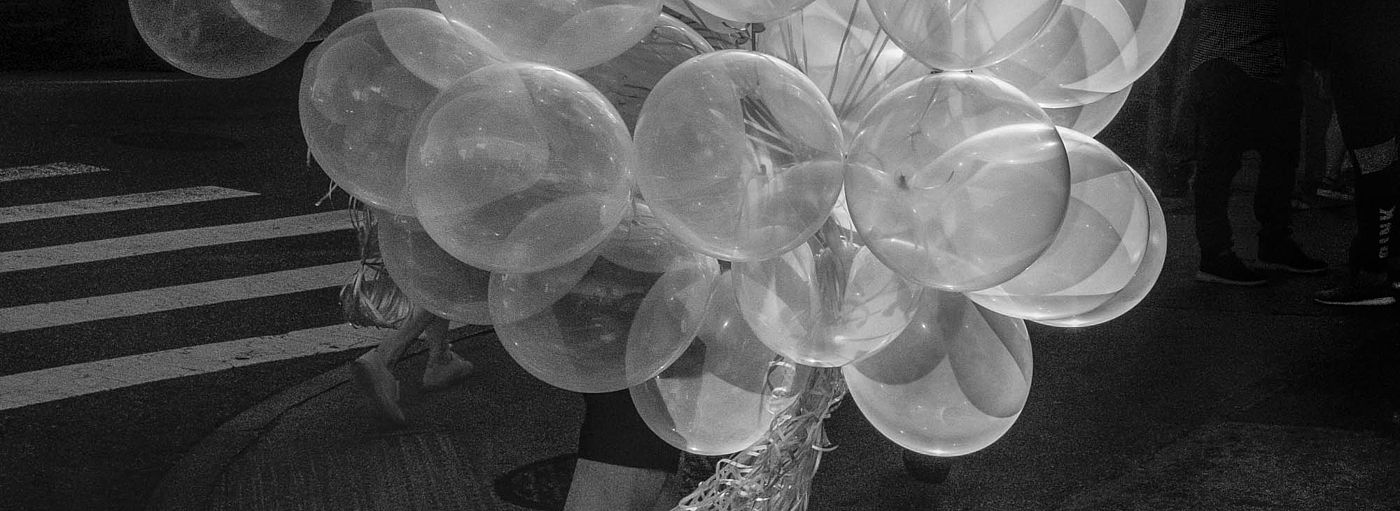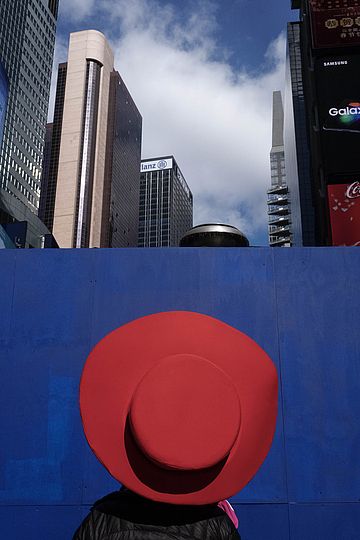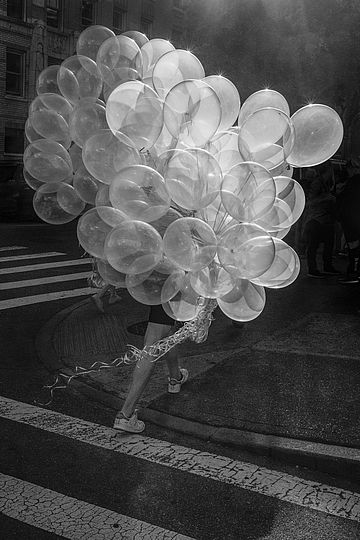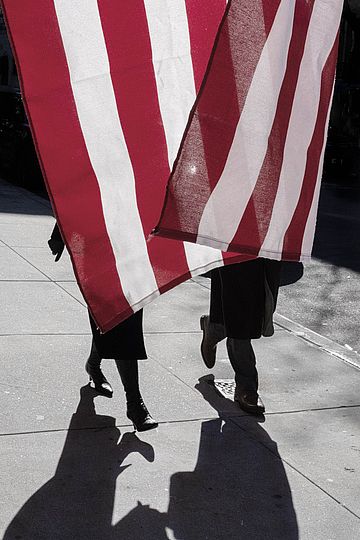Photos can charm us like visual poetry. Especially when they are torn away from the dynamics of street life. Then they pop into our lives in a moment of happiness, like Robert Doisneau's kiss of two lovers in the midst of the hustle and bustle of Parisian traffic. Street photography is capable of giving us moments of pure joie de vivre. Then a snapshot tells us about the French "joie de vivre" of a cyclist in the provinces, who has squeezed a baguette across the luggage rack of his bike for the afternoon ride home along the country road and is pedaling through an avenue in a good mood. But photos can also aggressively tantalize us, like the shot of that snarling New York kid pointing a toy gun directly at the photographer's lens.
The Everyday Artist
If photography always seems to us a bit like pressing life's pause button, then the street provides the daily changing stage sets for it. The "street photographer" is a kind of everyday artist who captures that "decisive moment" when the dynamics of the street condense into a good picture. "No film director can arrange the unexpected you find on the street," the French photopoet Robert Doisneau once opined. The individual character of an image-maker can always give new impetus to street photography.
Pictures with the smell of the street
The American photography classicist William Klein emphasizes the value of a recognizably individual approach. And recommends to any newcomer: "Be yourself!" Better to snap a little awkwardly at first, but with an individual touch. Klein's New York colleague Bruce Gilden literally wants to bring the smell of the street to street photography. He approaches passersby like a panther approaches its prey, creeps around them and shoots his pictures head-on, relentlessly at close range. This has resulted in impressive portraits of genuine character heads, which may appear aggressive to many, but always bring out the authentic, genuine in people.
Duolog in the now
"Street photography is about staying completely in the moment. I love observing people and bringing the visual clutter of a busy city together in one image for a split second, while completely immersing myself in everyday life," says New York-based German Nina Welch-Kling. "That means capturing and documenting the NOW." Her illustrated book "Duologues" (39.90 euros) will soon be published by Kehrer Verlag, in which she allows her street images to enter into dialogue, opening up new aesthetic associative spaces. Street photographers feel the pulse of the city for us. They are the true heirs of the 19th-century flâneurs; they drift, find, marvel, and photograph. Or as Joel Meyerowitz, another great master of street photography, puts it, "You fill the (picture) frame with feelings, with energy, discoveries and risks, leaving enough space for others to access."



